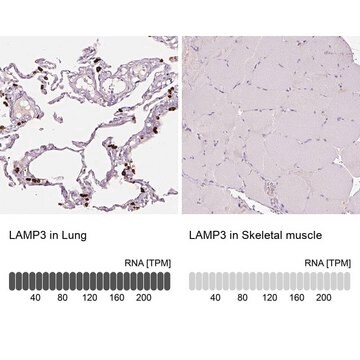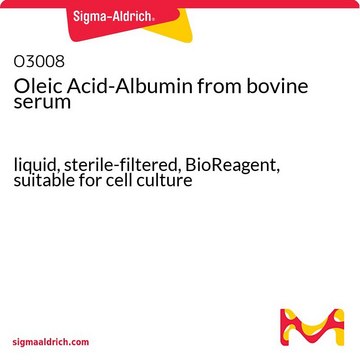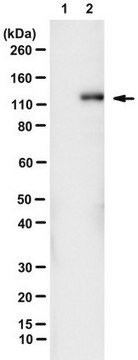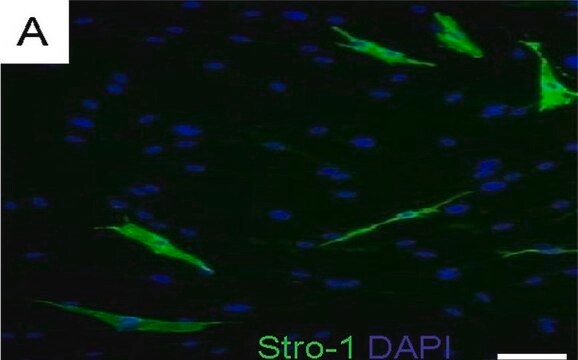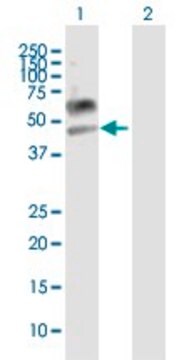MABC44
Anti-LAMP-3 Antibody, clone 16H11.2
clone 16H11.2, from mouse
Sinonimo/i:
LAMP, CD208, LAMP-3, DC-loysosome-associated membrane glycoprotein, DC LAMP, DC-LAMP, Protein TSC403
About This Item
Prodotti consigliati
Origine biologica
mouse
Livello qualitativo
Forma dell’anticorpo
purified immunoglobulin
Tipo di anticorpo
primary antibodies
Clone
16H11.2, monoclonal
Reattività contro le specie
human
tecniche
immunohistochemistry: suitable
western blot: suitable
Isotipo
IgG2bκ
N° accesso NCBI
N° accesso UniProt
Condizioni di spedizione
wet ice
modifica post-traduzionali bersaglio
unmodified
Informazioni sul gene
human ... LAMP3(27074)
Descrizione generale
Immunogeno
Applicazioni
Cell Structure
Apoptosis - Additional
Organelle & Cell Markers
Qualità
Western Blot Analysis: 1 µg/mL of this antibody detected LAMP-3 in MCF-7 cell lysate.
Descrizione del bersaglio
The calculated molecular weight of this protein is 41 kDa, but has been observed at ~65-90 kDa due to glycosolation (de Saint-Vis, B., et al. (1998). Immunity. 9(3):325-336).
Stato fisico
Stoccaggio e stabilità
Risultati analitici
MCF-7 cell lysate
Altre note
Esclusione di responsabilità
Non trovi il prodotto giusto?
Prova il nostro Motore di ricerca dei prodotti.
Codice della classe di stoccaggio
12 - Non Combustible Liquids
Classe di pericolosità dell'acqua (WGK)
WGK 1
Punto d’infiammabilità (°F)
Not applicable
Punto d’infiammabilità (°C)
Not applicable
Certificati d'analisi (COA)
Cerca il Certificati d'analisi (COA) digitando il numero di lotto/batch corrispondente. I numeri di lotto o di batch sono stampati sull'etichetta dei prodotti dopo la parola ‘Lotto’ o ‘Batch’.
Possiedi già questo prodotto?
I documenti relativi ai prodotti acquistati recentemente sono disponibili nell’Archivio dei documenti.
Il team dei nostri ricercatori vanta grande esperienza in tutte le aree della ricerca quali Life Science, scienza dei materiali, sintesi chimica, cromatografia, discipline analitiche, ecc..
Contatta l'Assistenza Tecnica.
